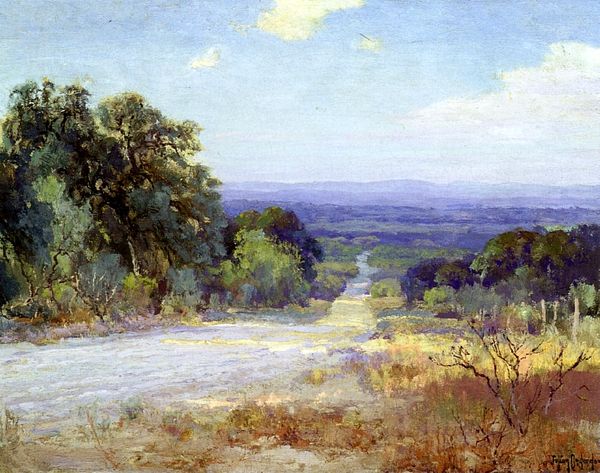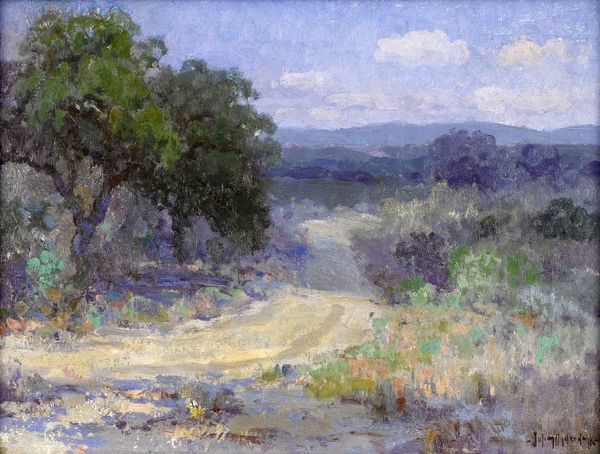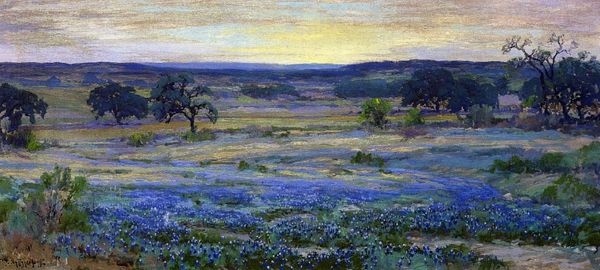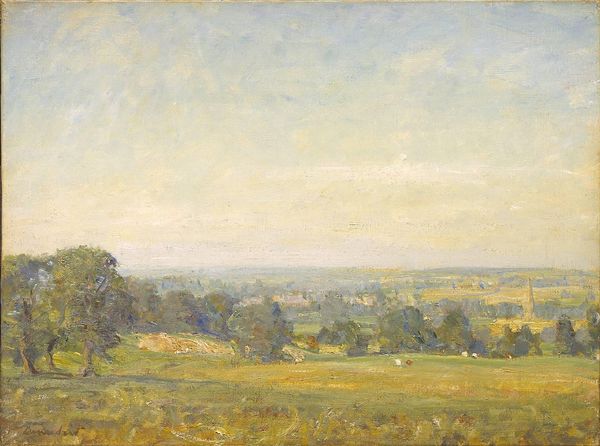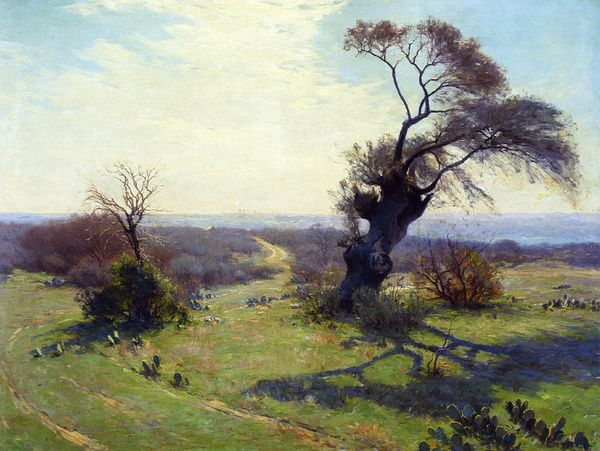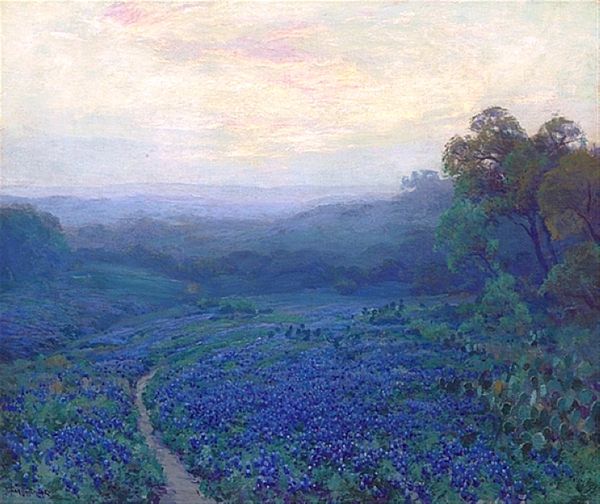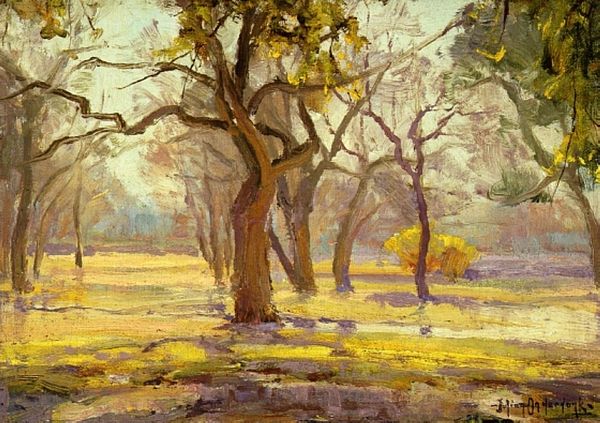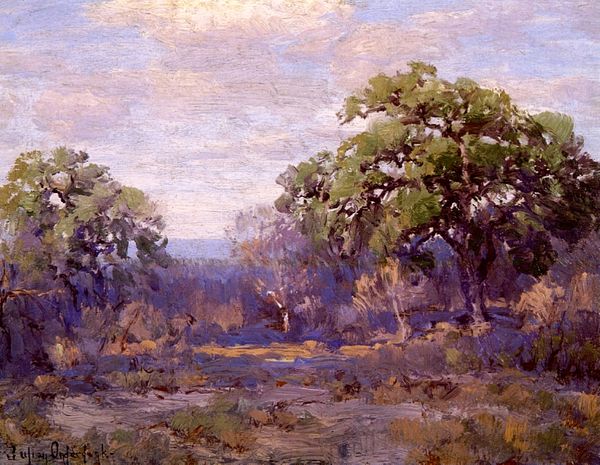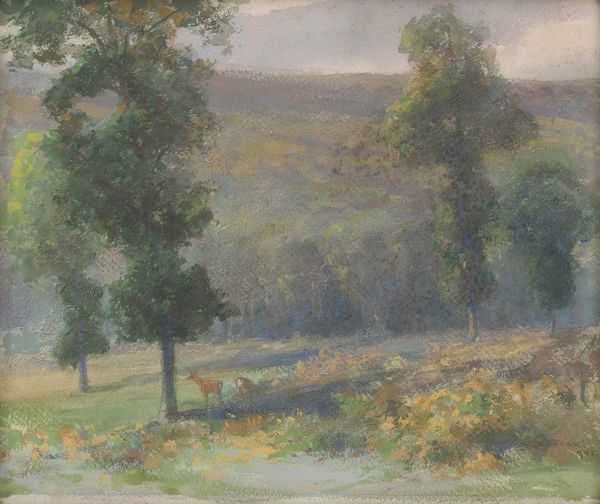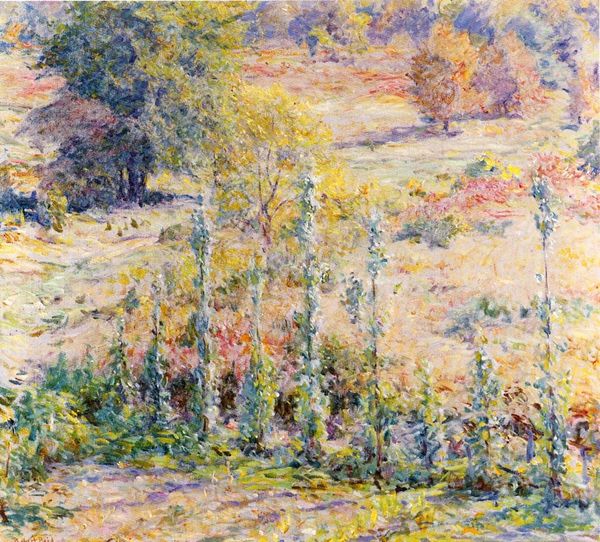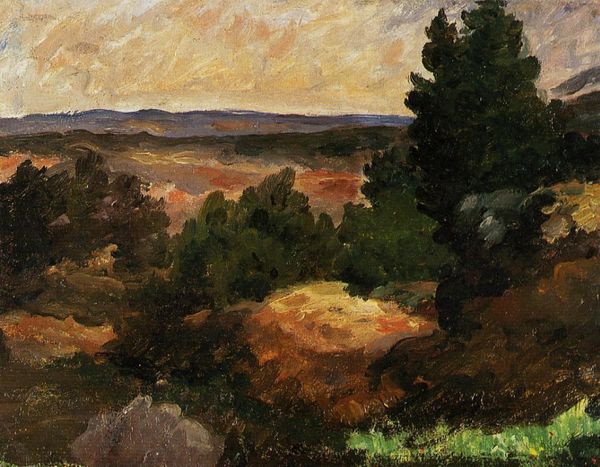
Copyright: Public domain
Curator: "Last Rays of Sunlight, Early Spring in San Antonio," painted in 1922 by Robert Julian Onderdonk. A soft, hazy Texas landscape rendered in oil on canvas. Editor: Immediately, the lilac hue captivates me; a gentle twilight blanketing the land. There's an ethereal quiet here, almost melancholic, wouldn't you say? Curator: Perhaps, or maybe simply reflective. Onderdonk was a master of capturing light and atmosphere, very much influenced by Impressionism and painting en plein air. Editor: Tell me more about "plein air", because to my eyes the materials themselves seem very important in how the light manifests across the image, as if each daub of paint is chosen not just for color but for reflective qualities. Curator: Well, plein air literally translates to "open air", which refers to the practice of painting outdoors directly from nature, to engage intimately with light and setting. He often returned to the same vistas repeatedly, studying subtle changes with keen attention. Think about the logistical considerations of an outdoor painter during this period—canvases, paints, transportation; all part of Onderdonk's means of production. Editor: Indeed. Looking closely, you can see how the brushstrokes create a tangible texture, capturing the rugged terrain and wild vegetation. Was this attention to local landscape unusual for artists at the time? Curator: Onderdonk played a crucial role in defining a specifically Texan identity within American art, shifting focus from European themes. This commitment resonates with the Regionalist movement. In this piece he finds grandeur in what might be viewed as mundane: the untamed terrain just outside the city limits. It's an ode to the specific quality of Texan light and landscape. Editor: I can definitely appreciate that regional nuance. But, to return to the image’s materiality and process, I am thinking of the work that Onderdonk, the artist, but also Onderdonk the human, the laborer, had to put in to bring these ‘last rays of sunlight’ to the canvas—something both physically and psychologically impressive. Curator: I completely agree, it's about more than just visual representation; it's a communion with the land. The painting holds a beautiful tenderness, I feel. Editor: Yes. Now when I step back, the lilac, for me, feels much warmer too—the promise of a gentle twilight after a painter's labour is done.
Comments
No comments
Be the first to comment and join the conversation on the ultimate creative platform.
